660 Revival
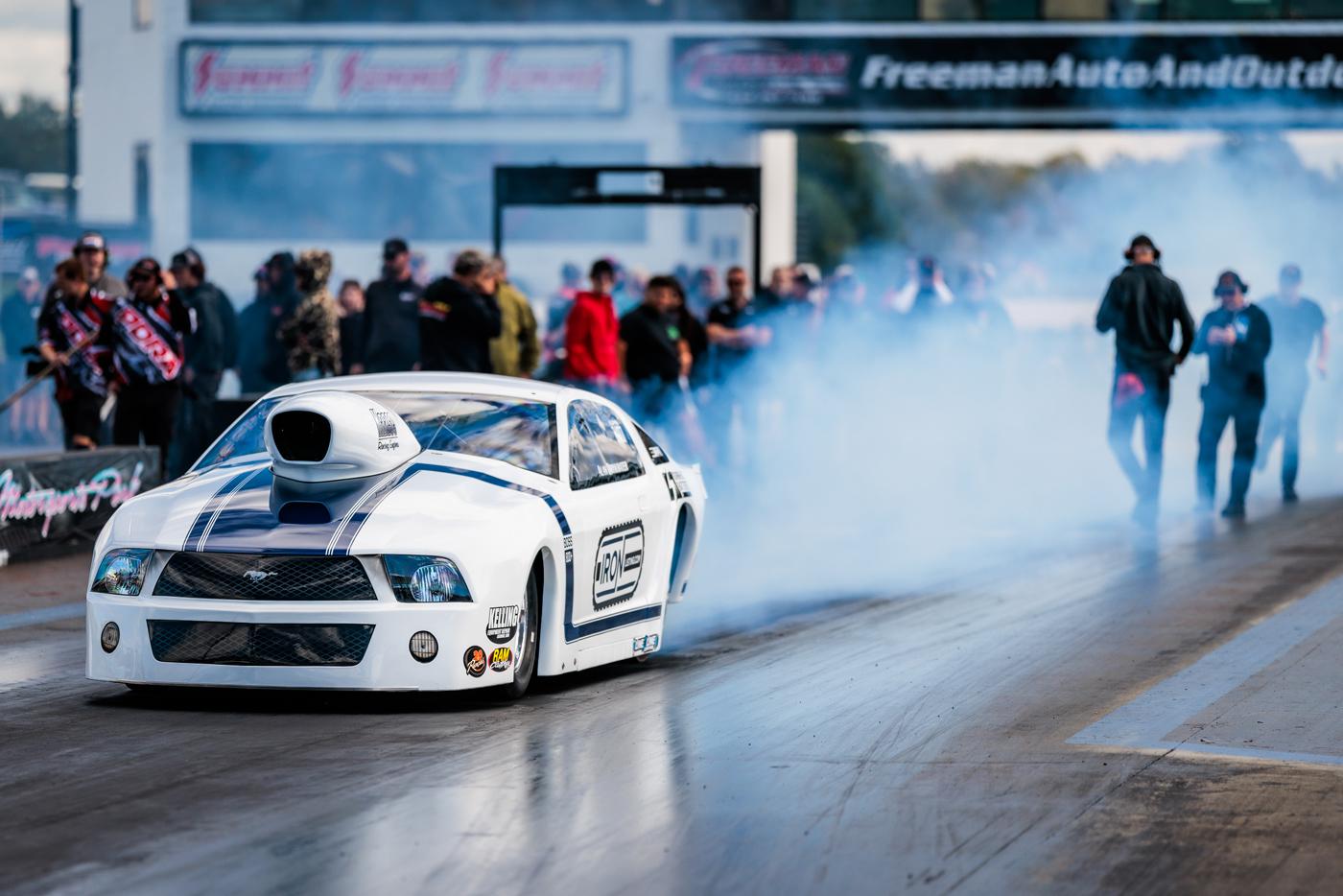
Does eighth-mile racing hold the secret to drag racing’s long-term success?
“Drag racing is such a sensory experience—the sights, the sounds, the smells. Watching it on TV is cool, but being there in person is so much better.”
Drag racer and PDRA marketing director Will Smith hit on something important as he contemplated how to protect drag racing’s future. He wasn’t naïve to the headwinds facing the industry; Smith has heard the naysayers’ various arguments—the core demographics are aging, younger generations don’t care about cars, land is too valuable, the future will be all-electric—but he also understands drag racing has unique appeal.
Drag racing is meant to be felt.
Just as a spectator can feel an NHRA Top Fuel car scream to the 1,000-foot mark at more than 330 miles per hour, a grassroots competitor can feel the camaraderie of the competition at the local drag strip. Professional drag racing gets the national attention, but you might discover the key to drag racing’s future at a simple grassroots eighth-mile event.
“The heartbeat and backbone of drag racing is at these local drag strips run by families that are sustaining themselves in very small markets,” said Chris Graves, owner and operator of Funny Car Chaos. “I can’t tell you how many eighth-mile tracks there are in Texas, Oklahoma, and Arkansas that have been open forever and are staying open.”
Embrace the Chaos
Based in Princeton, Texas, and hosting races from coast-to-coast, Graves’ Chaos series is arguably one of the most entertaining and successful drag racing shows in the country. You won’t find John Force or Ron Capps there, but there’s no shortage of authenticity or colorful characters.
Racing strictly on the eighth mile, the series launched in 2017 as a one-race showcase of grassroots Funny Cars from all eras. It wouldn’t take long for demand to grow the Chaos brand into two different series—Funny Car Chaos and Nitro Chaos—with a healthy slate of 14 races on the books for 2024.
The rules are simple. “The magic potion is that we are basically a rules-free race program,” said Graves. “We don’t have a limit or regulation on engines, body styles, or anything like that. The safety stuff is obviously checked and required, but outside of that you can run any front-engine Funny Car or nitro car.”
The potion works like a charm. The series welcomed its 200th different Funny Car into competition this year and regularly packs the grandstands with drag racing fans of all stripes. They line up nostalgia Funny Cars, modern day Funny Cars, nitro and alcohol Funny Cars—there’s something for everyone. With unlimited horsepower on the line, the series sticks to eighth-mile racing for two simple reasons: safety and affordability.
“The parts attrition is a huge part of why we’re running eighth mile,” said Graves. “These are grassroots racers; they aren’t professional race car drivers with million-dollar budgets and sponsors on the side of their car. Our drivers have names on the side of their car like Ballew Thunder, Mr. Explosive, Grim Reaper.”
It’s a great example of the power of authenticity and accessibility. Graves ensures his races feature a family-friendly atmosphere and that fans have unlimited access to the race cars and drivers in the pits, allowing them to interact with the stars of the show.
This is a key page from a playbook finding success right now. The strength of eighth-mile grassroots drag racing is not driven by windfall profits, but by people with a dedicated passion for the sport.
“All of the independent eighth-mile drag racing series are sitting pretty good right now,” said Graves. “It’s just a different atmosphere [at the track]. It dates back to where the big show was 25 or 30 years ago.”
Give, Don’t Take
The World Drag Racing Alliance (WDRA) just left the starting line a year ago but has found success with a straightforward mission: Give back to the sport at the grassroots level and make it sustainable for everyone involved.
“WDRA is strictly in service to the track owners and bracket racers at the core of our sport,” said Skooter Peaco at the WDRA, Springfield, Illinois. “WDRA will give more to the sport than it takes and will work to form an ‘alliance’ between the sanction, the tracks, the racers, and the sponsors so everyone benefits and not just one group.”

Grassroots drag racers are passionate about their sport, but the love of racing only goes so far. The economic model still needs to be sustainable.
“We see that the racers are less likely to travel to events that don’t have the proper overall value,” said Peaco. “The facility location, parking, timing, the race itself, the people behind the event, and the opportunity the race provides all get factored in.”
One important element to providing value is getting sponsor dollars and discounts into the right hands. “We created a way for sponsors to support racers and tracks without the commissions or fees they would normally pay to the sanction,” said Peaco. “We created nearly a dozen tangible discounts for our member tracks and several discounts for our racers. This puts real money back in their pockets.”
According to Peaco, some tracks have saved up to $15,000 during the season due to these discounts, not an insignificant amount for a local track. The WDRA is not just helping existing tracks save money, but it’s also helping new tracks come to life.
In 2023, WDRA partnered with Street Legal Dragway in Southern California. Owned and operated by Andy Marocco, this brand new, 330-foot drag strip “aims to provide a safe and legal platform for regional street car enthusiasts to unleash their horsepower and compete.” (Learn more about Marocco’s vision for Street Legal Dragway on page 50.)
Drag racing for 330 feet is a new concept, but it aligns with the WDRA’s mission to do whatever is necessary to keep drag racing going strong into the future.
Small-Tire Success
Like any form of motorsports, drag racing is in a constant battle to stay relevant. Fortunately, with the success of the No Prep Kings TV show, which just completed its sixth season, and the growing reach of drag-and-drive influencers like Cleetus McFarland and Tom Bailey, small-tire drag racing is helping grow the sport amongst a younger fan base.
Stefan Rossi, owner of ACE Racing Engines in Torrance, California, knows all about the success of small-tire racing. After relocating his engine shop from the UK to California in 2019, business boomed. A dedicated quarter-mile racer back in the UK—where the eighth-mile trend is still slow to catch on—his move to the US converted him to running eighth mile.
“All my life I was like, ‘No, eighth mile is boring,’” said Rossi. “Then probably a year after being in the [United States], I totally flipped. Now I look forward to running the eighth mile, whereas I don’t really look forward to running the quarter.”
Today, most of his business is dedicated to building turbocharged eighth-mile engines for drag radial outlaw racing. He’s busier than ever, often working 15-hour days to keep up with demand. When not working on an engine build for a customer, he’s building his 1966 Nova to compete in the Pro 275 class in the Fueltech Radial Outlaws Series, a highly competitive and popular series.
“Car counts at these [Outlaw] races are huge, with 32-car fields for most classes,” said Rossi. “Two customers at a recent race were parked out in the grass because there was no room in the actual pits.”
Rossi believes the growing appeal of drag radial outlaw racing is due to the variety of classes and its accessibility for amateur racers. “It’s appealing to working class people because it’s actually reachable,” said Rossi. “There are so many different classes and different speeds ranging from the mid-3s to the 5.50s, so you can fit in pretty much anything according to your budget.”
For an engine builder obsessed with performance and engineering, the appeal of eighth-mile outlaw racing is straightforward. “I think eighth mile shows the true performance,” said Rossi. “Everything must be perfect—the engine, the chassis, the trans, the converter—to go sub-one in the 60-foot and then sub-four in the eighth. Whereas in the quarter mile, you can get away with a bit more.”
Shrinking Margins, Skyrocketing Performance
The Professional Drag Racers Association (PDRA)—the eighth-mile drag racing series based in Fredericksburg, Virginia, with events on the East Coast and in the Midwest —continues to see growing car counts and razor-thin margins.
“Ten years ago, Pro Nitrous running 3.70s was crazy fast. Now that time is borderline of qualifying,” said Smith. “Today there are cars running 3.60 flats, and they’re knocking on the door of the 50s. Two-tenths of a second improvement in this short amount of time is huge, and that’s happening in every class.”
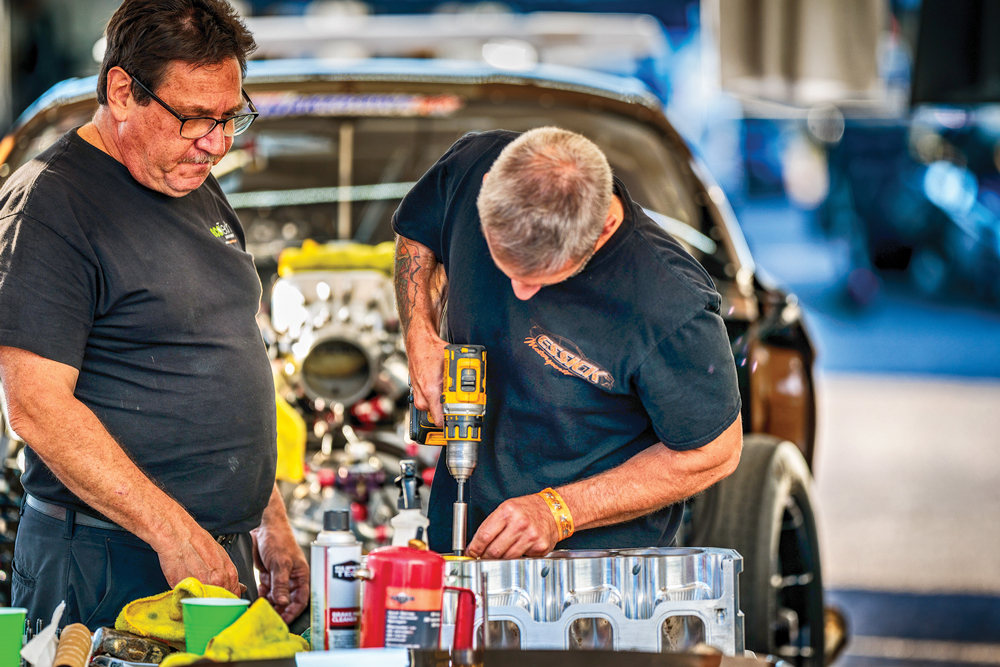
In addition to ultra-competitive Pro Mod racing, PDRA features several other classes ranging from super street to Junior Dragsters. To hear Smith describe it, car counts are up, ETs are down, and interest is peaking.
“Every year that goes by we get bigger and better,” said Smith. “Spectator turnout grows, our car counts go up or hold steady in all classes. The PDRA brand just continues to grow, and we’re going to keep building on it.”
Safety Comes First
All our sources cited reduced cost as an important reason behind the success of eighth-mile racing. It’s easier on parts, which is easier on the budget. More importantly, with the increased speeds of cars today, 660 feet is significantly safer for drivers.
“When you try to run these cars quarter mile, they get hairy and you’re on edge,” said Smith. “You take a Pro Mod running over 200 to the eighth, it’s going to gain 50-plus miles an hour out the back to the quarter. Those 50 miles an hour make a big difference from a safety standpoint.”
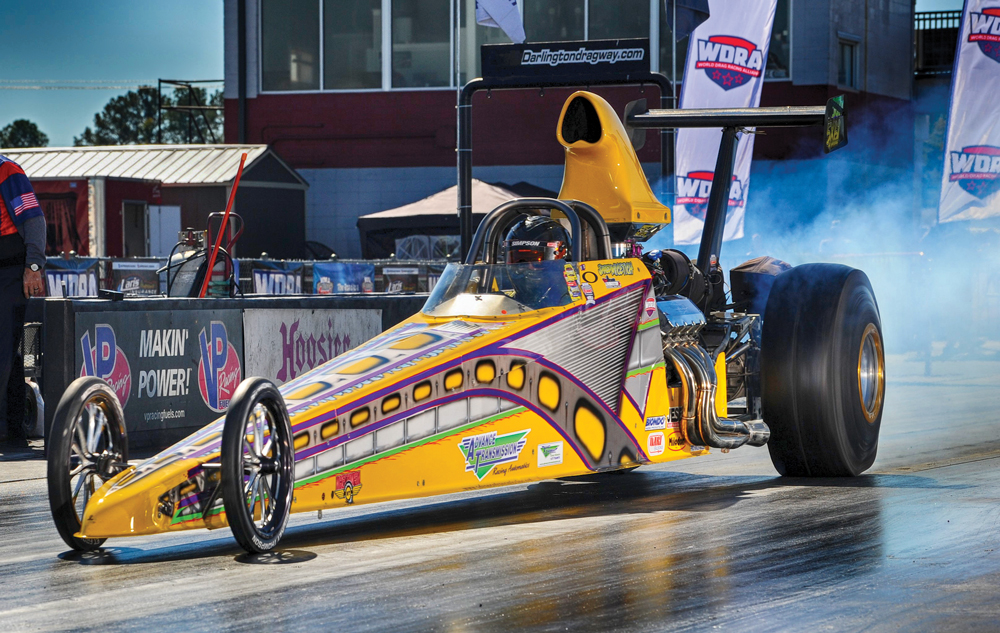
Drag racing is inherently dangerous, but as we continue to coax more speed and power out of vehicles, that risk needs to be mitigated. Just consider it was 1992 when Kenny Bernstein first broke the 300-mile-per-hour barrier in the quarter mile. Fast forward to 2023, Mike Salinas just topped 300 miles per hour in the eighth.
With speeds and acceleration rates skyrocketing, sufficient shutdown space is key. The PDRA only runs the eighth mile, but often uses quarter-mile tracks that offer longer shutdown areas.
Graves invested in Dave Leahy’s Electrimotion Shut-off Transmitter and Safety Shut-off Box for the Chaos series—a system that automatically deploys the parachutes and shuts off the fuel and ignition of a car once it crosses the finish line.
“We purchased the Leahy system this year as a safety upgrade to help us control some of these cars on the eighth mile,” said Graves. “These tracks that are 50 or 60 years old were built when cars were way slower. Now they’re crossing that same length of real estate much faster and at a higher rate of speed.”
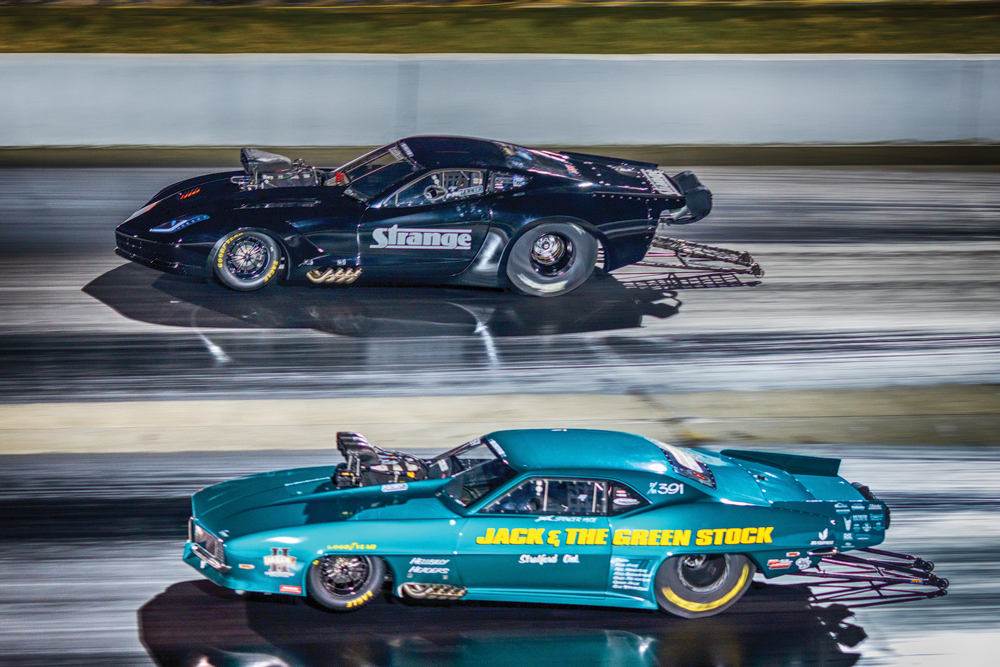
Tighter competition, increased safety, and decreased costs will always be a winning combination. Despite the amplified grumblings of a few quarter-mile traditionalists, people who love drag racing aren’t there for a distance, they are there to race. Light up the Christmas tree, mash the gas, race to the strip—there’s beauty in the simplicity.
“I’m a drag racing fan and I’m a drag racer,” said Smith. “I don’t care the distance; I just love drag racing.”
Back to Basics
Racing is all about winning, but working together as an industry to embrace change and innovation scores the biggest victory—a thriving industry. That’s what keeps the lights on at the hometown track and the wrenches turning at the local race shop.
“I think eighth-mile drag racing’s success is backed up by the industry it’s created,” said Graves. “There are so many businesses in hot rodding now and so many manufacturers that are able to sustain and grow their business with people buying their parts.”
Most importantly, drag racing’s appeal is no longer concentrated to one sanctioning body or style of racing. The interest is everywhere.
“If you step back and look at drag racing in a box, right now I’d say it’s more successful than it was 30 years ago,” said Graves. “Today you’ve got 100 different ways to drag race, whether it’s small tire, no prep, Funny Cars, electric cars, it doesn’t matter.”
The trends are pointing in a clear direction: a grassroots revival.
Rossi is seeing an increase in no-time racing, no-prep racing has found mainstream success via television, and no-rules racing has found popularity in the Chaos series. In 2024, the hunger for drag racing is strong, and those who wish to dismiss the sport clearly haven’t been paying attention.
“Kids don’t hot rod anymore, and motors are run by computers now, but there’s still this quest for speed and trying to go faster in whatever way you want to do it,” said Graves. “The pulse is good; the drag racing pulse is good.”
Southern California’s 330-Foot Opportunity
Southern California is the birthplace of drag racing, but today only three public drag strips remain—Barona, Irwindale, and Bakersfield—serving roughly 24 million people. The reasons are unfortunate but familiar: soaring land values, increasing insurance premiums, and online retailers’ propensity for replacing race tracks with distribution centers.
There are no easy answers to this problem, but Andy Marocco has come up with a unique solution. In fall 2023, he officially opened Street Legal Dragway in Perris, California, a 1/16th-mile drag strip catering to the street-legal racing crowd.
“We have a unique opportunity to reinvent a segment of drag racing and bring it back to where it used to be,” said Marocco.
With limited space to work with, Marocco drew inspiration from the Hot August Nights Drag Races in Sparks, Nevada. Since 2011, the massive car show transforms a casino parking lot into a functioning 1/16-mile drag strip for four nights of street-legal hot rod competition. The concept has worked well and proven to be popular, so Marocco decided to bring the idea south and try it on a permanent basis. He pitched the idea to the World Drag Racing Alliance (WDRA), which partnered with him to turn his dream into a reality.
“It isn’t every day that you get to help create a new drag race venue, while at the same time aiding in getting street racing to the track where it belongs, and doing it in California,” said Skooter Peaco at the WDRA, Springfield, Illinois. “Andy’s model is very viable and could really help slow down the problem of our tracks disappearing.”
As with any radical new concept, just getting the drag strip open involved several challenges that most track operators wouldn’t encounter. First off, there were no set rules for a 330-foot drag strip, a concern for insurance companies.
“With the WDRA’s help and sanctioning, we were able to create a new set of rules for 330,” said Marocco. “It wasn’t just about building a drag strip, we also had to rewrite the standards for the insurance underwriters as well.”
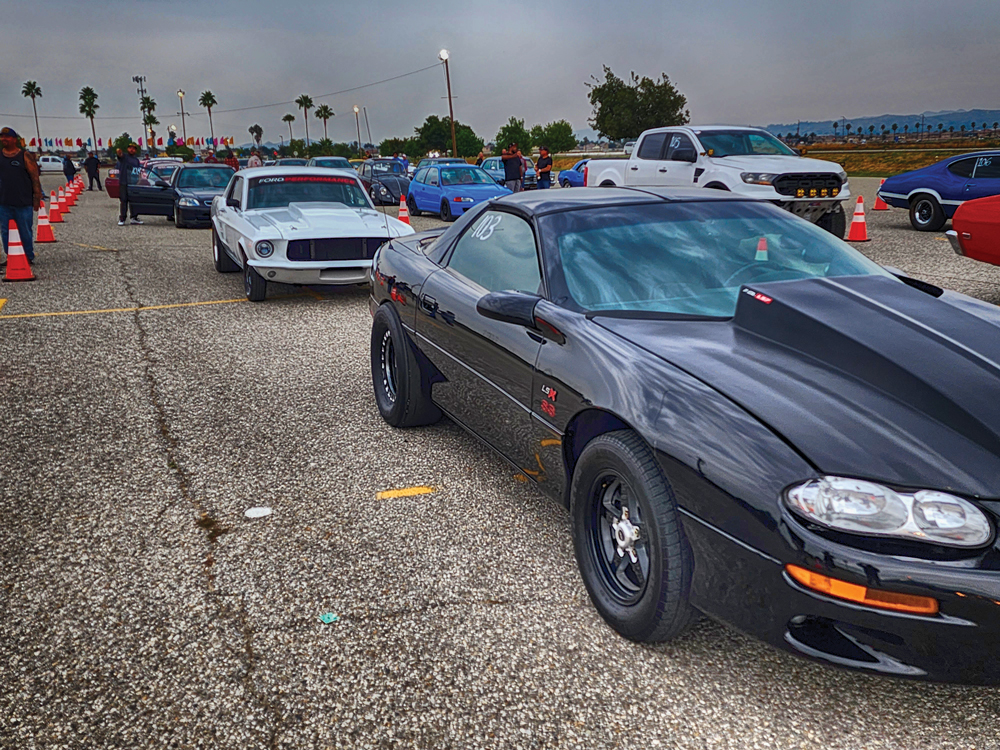
With the paperwork complete, the asphalt laid, and the gates officially open, would people be interested in 1/16-mile drag racing? The initial reception has been positive, with Marocco saying his soft opening saw around 75 cars come out and positive sentiments from those in the pits.
“The appeal is the fact that you can test and tune, you can have eliminations, brackets, you can run for prize money or trophies—there’s something in it for everybody,” said Marocco. “It’s also affordable. What other motorsport can you name where you can go race your vehicle for 40 bucks?”
The affordability is important, but it takes more than cheap runs to keep racers coming back. Marocco is banking on the fact that “330 racing” takes drag racing back to its roots and delivers ultra-competitive racing. Margins will be even tighter, producing a challenge for drivers and an entertaining show for spectators.
“The drivers have to gear it different; they have to learn how to control the clutch a little different,” said Marocco. “I think most racers fear that they may look foolish on a 330 track because there’s less time and less distance to make up for an error.”
Marocco said that a 330-foot drag race is distilled down to two core components of drag racing. “The equalizer right now on our track is traction and reaction. That’s it, that’s the purity of the sport.”
Ultimately, the mission of Street Legal Dragway is to reduce illegal street racing by providing an outlet for drag racing in a region that has limited opportunities to do so. It’s not traditional drag racing, but Marocco’s unique vision is exactly what attracted the WDRA to throw its support behind the idea.
“The ‘traditional’ drag racer may not think 330 feet is a viable option for our sport, but they are forgetting that this project isn’t for the traditional drag racer,” said Peaco. “It is for the kids on the street who aren’t coming to drag strips right now. Andy is introducing a generation of street racers to a safer alternative and a place they can hang out on a Friday night.”
Honoring drag racing’s heritage is important, but as Marocco and Peaco explained, maintaining a rigid traditionalist mindset is counterproductive to the health of the sport. Times change, circumstances change, and being open-minded will ultimately keep drag racing alive for decades to come.
“‘Traditional’ racers initially hated eighth-mile racing when it first debuted, and now eighth-mile racing is pretty much the standard,” said Peaco. “WDRA is behind this project because if we want to ensure that our sport is around for another 70 years, then we need to start thinking about it differently.”
One-sixteenth-mile drag racing won’t be for everyone, but it fills an important niche with the street car crowd. Additionally, in drag strip-starved locations like Southern California, a 330-foot track can easily be built for a temporary event—like Hot August Nights does every year.
“Three-hundred, thirty racing is definitely something I think we’ll see more of in the future, because you can accommodate it in a lot of different places, like abandoned parking lots or shopping centers,” said Marocco.
Located on state fairgrounds, Marocco’s Street Legal Dragway has a five-year contract, with another five-year option at his discretion. It is an innovative idea, and it will be interesting to see how 330 racing fares in the months and years ahead.
“Somebody’s got to take the risk. I did it,” he added.
Opening a new drag strip in Southern California is always a risk, but taking on that challenge in an effort to preserve the future of our sport? That’s a risk worth celebrating. —Jack Haworth
SOURCES
ACE Racing Engines
ace-engines.com
Funny Car Chaos
funnycarchaos.com
Professional Drag Racers Association (PDRA)
pdra660.com
Street Legal Dragway
streetlegaldragway.com
World Drag Racing Alliance (WDRA)
racewdra.com
 MEMBERSHIP LOGIN
MEMBERSHIP LOGIN JOIN PRI
JOIN PRI


